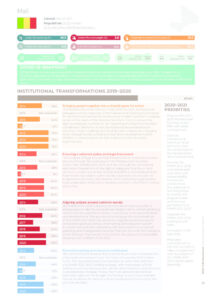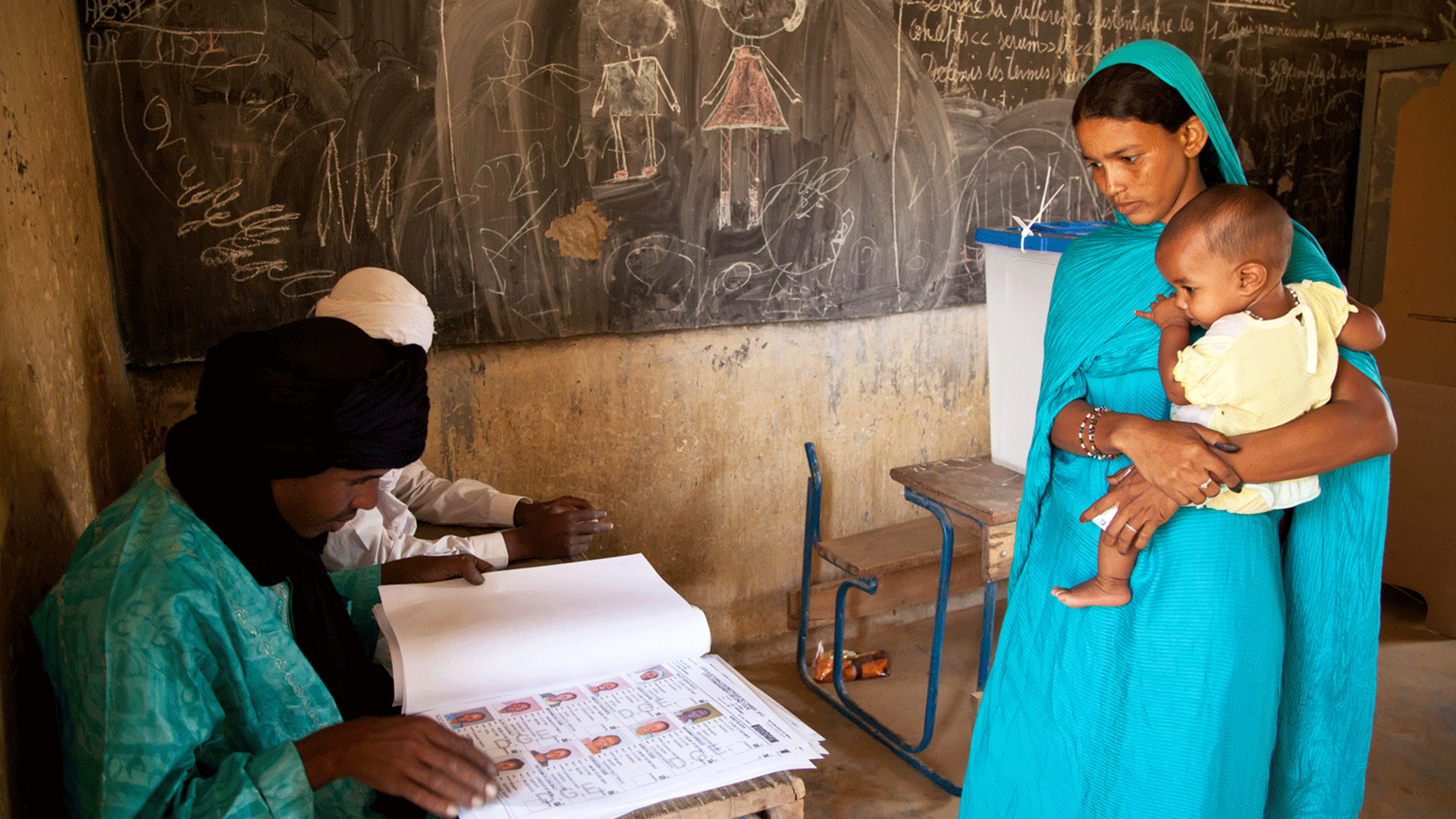Nutrition situation
Under five stunting (%)
26.9
Under five overweight (%)
2
Anaemia in women 15-49 years (%)
51.3
Under five wasting (%)
9
Low birth weight (%)
n.a.
0 to 5-month-old exclusive breastfeeding (%)
40.2
Adolescent overweight (%)
Male: 6.3
/ Female: 14.1
Adult overweight (%)
Male: 20.3
/ Female: 35.2
Adult obesity (%)
Male: 4.6
/ Female: 12.4
Adult diabetes (%)
Male: 8.4
/ Female: 6.4
COVID-19 snapshot
COVID-19 has further exacerbated the food and nutrition crisis which has been ongoing since 2012. In addition, in its initial response to the pandemic, the government has not able to integrate the food and nutrition component sufficiently. It remains a major challenge to ensure that food distributed to vulnerable populations is of better nutritional value.
Institutional transformations 2019-2020
Bringing people together into a shared space for action
The National Nutrition Forum in July 2019, the high-level political dialogue and the meetings of the Intersectoral Technical Committee for Nutrition and general secretaries have made it possible to engage actors in the vision of the National Nutrition Policy to ensure the right to adequate nutrition for all. Operating multisectoral nutrition coordination platforms at the devolved and decentralised level remains a major challenge but local decision-makers are engaging more through social, cultural and economic development plans (PDESC) in several regions in Mali thanks to SUN civil society organisations.Ensuring a coherent policy and legal framework
The analysis of legal and political frameworks for food and nutrition security through the evaluation of the Multisectoral Nutrition Action Plan (PAMN) 2014–2018, and also through the monitoring and recommendations of the right to adequate food forum and the two nutrition fora in Mali in 2010 and 2019, at the devolved level, have made it possible to take nutrition objectives into account in programme and policy documents. SUN civil society organisations have undertaken initiatives to monitor nutrition n the PDESC of local authorities.Aligning actions around common results
The PAMN 2014–2018 evaluation process has made it possible to analyse gaps to identify and address needs in terms of strengthening the functional capacities of actors, in particular at the decentralised and devolved level. The process of drawing up the second edition of the PAMN 2021–2025 has aimed to integrate lessons learned to consolidate gains as well as a monitoring and evaluation system in connection with the 11 planning cells and statistics and central planning and management services. This is in line with the indicators of the Strategic Framework for Economic Recovery and Sustainable Development (CREDD) 2019–2023.Financial tracking and resource mobilisation
The commitments made at the nutrition forum have translated into a financial commitment from the State of more than 600 million FCFA. The strengthening of partnerships as well as the definition of a PAMN 2021–2025 funding strategy, with the support of SUN technical and financial partners, should allow financial commitments to progressively increase. Finally, the most operational and least restrictive approach for budget monitoring, so as to have available factual databases for advocacy for increasing nutrition funding, has yet to be decided.2020-2021 Priorities
- Propose the 2021– 2025 Multisectoral Nutrition Action Plan with crosscutting issues.
- Operate multisectoral and multi-actor platforms from the central level to the devolved and decentralised level.
- Develop the PAMN 2021–2025 monitoring and evaluation and accountability mechanism, and facilitate the operation of sectoral groups to monitor the programmatic and financial performance of PAMN 2021–2025.
- Organise the PAMN 2021–2025 funding round table.
- Strengthen SUN Networks.
- Propose a commitment for the N4G Summit in Tokyo, in alignment with the targets of the PAMN 2021– 2025 World Health Assembly.
Download

